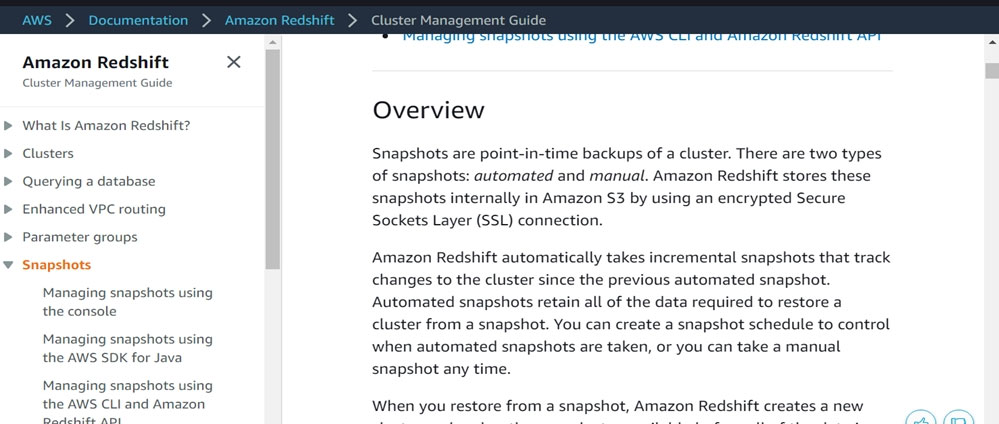A company is using a Single-AZ Amazon RDS for MySQL DB instance for development. The DB instance is experiencing slow performance when queries run.
Amazon CloudWatch metrics indicate that the instance requires more I/O capacity.
Which actions can a database specialist perform to resolve this issue? (Choose two.)
BD
A company has an AWS CloudFormation template written in JSON that is used to launch new Amazon RDS for MySQL DB instances. The security team has asked a database specialist to ensure that the master password is automatically rotated every 30 days for all new DB instances that are launched using the template.
What is the MOST operationally efficient solution to meet these requirements?
C
A startup company is building a new application to allow users to visualize their on-premises and cloud networking components. The company expects billions of components to be stored and requires responses in milliseconds. The application should be able to identify:
✑ The networks and routes affected if a particular component fails.
✑ The networks that have redundant routes between them.
✑ The networks that do not have redundant routes between them.
✑ The fastest path between two networks.
Which database engine meets these requirements?
B
An online retail company is planning a multi-day flash sale that must support processing of up to 5,000 orders per second. The number of orders and exact schedule for the sale will vary each day. During the sale, approximately 10,000 concurrent users will look at the deals before buying items. Outside of the sale, the traffic volume is very low. The acceptable performance for read/write queries should be under 25 ms. Order items are about 2 KB in size and have a unique identifier. The company requires the most cost-effective solution that will automatically scale and is highly available.
Which solution meets these requirements?
C
A ride-hailing application uses an Amazon RDS for MySQL DB instance as persistent storage for bookings. This application is very popular and the company expects a tenfold increase in the user base in next few months. The application experiences more traffic during the morning and evening hours.
This application has two parts:
✑ An in-house booking component that accepts online bookings that directly correspond to simultaneous requests from users.
✑ A third-party customer relationship management (CRM) component used by customer care representatives. The CRM uses queries to access booking data.
A database specialist needs to design a cost-effective database solution to handle this workload.
Which solution meets these requirements?
A
The Development team recently executed a database script containing several data definition language (DDL) and data manipulation language (DML) statements on an Amazon Aurora MySQL DB cluster. The release accidentally deleted thousands of rows from an important table and broke some application functionality.
This was discovered 4 hours after the release. Upon investigation, a Database Specialist tracked the issue to a DELETE command in the script with an incorrect
WHERE clause filtering the wrong set of rows.
The Aurora DB cluster has Backtrack enabled with an 8-hour backtrack window. The Database Administrator also took a manual snapshot of the DB cluster before the release started. The database needs to be returned to the correct state as quickly as possible to resume full application functionality. Data loss must be minimal.
How can the Database Specialist accomplish this?
D
A company is load testing its three-tier production web application deployed with an AWS CloudFormation template on AWS. The Application team is making changes to deploy additional Amazon EC2 and AWS Lambda resources to expand the load testing capacity. A Database Specialist wants to ensure that the changes made by the Application team will not change the Amazon RDS database resources already deployed.
Which combination of steps would allow the Database Specialist to accomplish this? (Choose two.)
AD
A manufacturing company's website uses an Amazon Aurora PostgreSQL DB cluster.
Which configurations will result in the LEAST application downtime during a failover? (Choose three.)
ABC
A company is hosting critical business data in an Amazon Redshift cluster. Due to the sensitive nature of the data, the cluster is encrypted at rest using AWS
KMS. As a part of disaster recovery requirements, the company needs to copy the Amazon Redshift snapshots to another Region.
Which steps should be taken in the AWS Management Console to meet the disaster recovery requirements?
A
Reference:
https://docs.aws.amazon.com/redshift/latest/mgmt/working-with-snapshots.html
A company has a production Amazon Aurora Db cluster that serves both online transaction processing (OLTP) transactions and compute-intensive reports. The reports run for 10% of the total cluster uptime while the OLTP transactions run all the time. The company has benchmarked its workload and determined that a six- node Aurora DB cluster is appropriate for the peak workload.
The company is now looking at cutting costs for this DB cluster, but needs to have a sufficient number of nodes in the cluster to support the workload at different times. The workload has not changed since the previous benchmarking exercise.
How can a Database Specialist address these requirements with minimal user involvement?
D